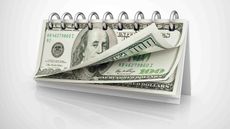Bond Funds in Trouble
This is a good time to sell long-term-bond funds and look for alternative sources of income.

Judging by the tone of e-mails I've received lately, many investors are upset and frightened about recent declines in the value of their bond funds. After benefiting from essentially a 30-year-long bull market -- the product of a steady decline in interest rates that started in 1981 -- many of you have been rudely reminded that bond prices fall when rates rise. And it makes no difference that losses in most cases have been relatively modest -- on the order of 3% or 4%, although some long-term funds have had steeper drops. People don't like to lose even bus fare when they invest in bonds.
Well, get used to it. Rates are likely to keep rising over the next few months and maybe longer. So this is a good time to sell long-term-bond funds and look for alternative sources of income.
Bond Math
When rates rise, existing bonds lose value because newer debt that pays higher rates is more attractive. To sell older bonds, you need to mark down their prices so that their yields approximate those of new bonds. The longer a bond's maturity, the more its price declines with increases in interest rates.

Sign up for Kiplinger’s Free E-Newsletters
Profit and prosper with the best of expert advice on investing, taxes, retirement, personal finance and more - straight to your e-mail.
Profit and prosper with the best of expert advice - straight to your e-mail.
Consider the fate of Vanguard Long-Term Treasury (symbol VUSTX). From October 6, 2010, through February 11, the yield on ten-year Treasuries zoomed from 2.4% to 3.6%. During that period, there were 17 days that the fund's net asset value dropped at least 1%; all told, the fund lost 12.4%.
Bond funds come with some inherent shortcomings. When investors withdraw more than others contribute, as has been the case lately, funds can't buy new debt at better interest rates. Even worse, managers have to dump bonds to raise cash to meet redemptions, putting additional pressure on bond prices.
Nor do most bond-fund managers possess any secret sauce. "As difficult as it is for active managers to add value in stocks, it's much harder to do so in fixed-income investing," says Larry Swedroe, an adviser and author of several sensible books on investing. Some managers -- for example, those at Loomis Sayles Bond (LSBRX), a member of the Kiplinger 25 -- do better than most. But even the most brilliant bond pickers are limited by the pool in which they operate.
Except in rare cases, bonds cannot double and redouble the way a stock can. And don't count on a fund's manager to try to protect principal by trimming maturities. Its charter may limit what he or she can do in that regard.
So if you need investment income, what can you do?
Here are some suggestions:
Build a ladder. If you buy individual bonds, you can build a portfolio that matures over a series of years. If rates are higher at the time a bond matures, buy a new bond that pays more. I used Fidelity.com to build a hypothetical ladder with one bond that matures each February from 2012 to 2019. The Web site generated a package of taxable bonds, all rated double-A or better. In its first year, the ladder would produce a yield of 3.7%.
Keep maturities short. Any fund that yields more than 4% and is relatively immune to higher rates is timely. I like Osterweis Strategic Income (OSTIX) (see Don't Get Soaked by Rising Rates). The fund, which owns junk bonds and convertibles, yields 4.2% and has an average duration of just 2.2 years. That means the funds NAV should decline just 2.2% if rates rise one percentage point. Since October 6, the fund has actually gained 3.5%.
Diversify your sources of income. Take money from a drippy bond fund and switch to a balanced fund, such as Vanguard Wellington (VWELX), which has 65% of its assets in dividend-paying stocks and most of the rest in medium-term corporate bonds. The fund yields 1.9%, and much of that payout comes from qualified dividends, which receive favorable tax treatment.

-
 Strategies to Optimize Your Social Security Benefits
Strategies to Optimize Your Social Security BenefitsTo maximize what you can collect, it’s crucial to know when you can file, how delaying filing affects your checks and the income limit if you’re still working.
By Jason “JB” Beckett Published
-
 Don’t Forget to Update Beneficiaries After a Gray Divorce
Don’t Forget to Update Beneficiaries After a Gray DivorceSome states automatically revoke a former spouse as a beneficiary on some accounts. Waivers can be used, too. Best not to leave it up to your state, though.
By Andrew Hatherley, CDFA®, CRPC® Published
-
 Why Investors Needn't Worry About U.S. Credit Downgrade
Why Investors Needn't Worry About U.S. Credit DowngradeFitch Ratings The United States saw its credit rating downgraded for just the second time in history, but experts aren't worried about the long-term damage to stocks.
By Dan Burrows Published
-
 Income-Investing Picks for a Recession
Income-Investing Picks for a RecessionInvesting for Income Some consequences of an economic downturn work to the benefit of fixed-income investors. Here are three fund ideas that fit the bill.
By Jeffrey R. Kosnett Published
-
 Dogs of the Dow Are 2022's Best in Show
Dogs of the Dow Are 2022's Best in Showdividend stocks Some of the best investments for income investors in a volatile 2022 have come from the Dogs of the Dow.
By Jeffrey R. Kosnett Published
-
 Bond Values in a Volatile Market
Bond Values in a Volatile MarketInvesting for Income While the market's instability may not be over just yet, the latter half of the year should be less daunting – and possibly more rewarding – for investors.
By Jeffrey R. Kosnett Published
-
 Should You Buy Bonds Now? What To Consider
Should You Buy Bonds Now? What To Considerbonds The fixed-income market has been turned on its head in recent years, but there are still opportunities for those looking to buy bonds again.
By James K. Glassman Last updated
-
 Dividend Dates: A Beginner's Guide
Dividend Dates: A Beginner's Guidedividend stocks Everything you need to know about ex-dividend dates, dividend announcements and other parts of the dividend calendar.
By Charles Lewis Sizemore, CFA Published
-
 Income Investors Should Look Beyond the Ukraine Invasion
Income Investors Should Look Beyond the Ukraine Invasionstocks Unless you invested in a Russian-themed ETF or an emerging markets index fund, the destruction of Moscow's capital markets is a distraction for investors.
By Jeffrey R. Kosnett Published
-
 Consider Short-Term Bond Funds
Consider Short-Term Bond FundsInvesting for Income These funds own the kind of stuff that benefits from a healthy economy and can withstand the Fed's rate hikes.
By Jeffrey R. Kosnett Published